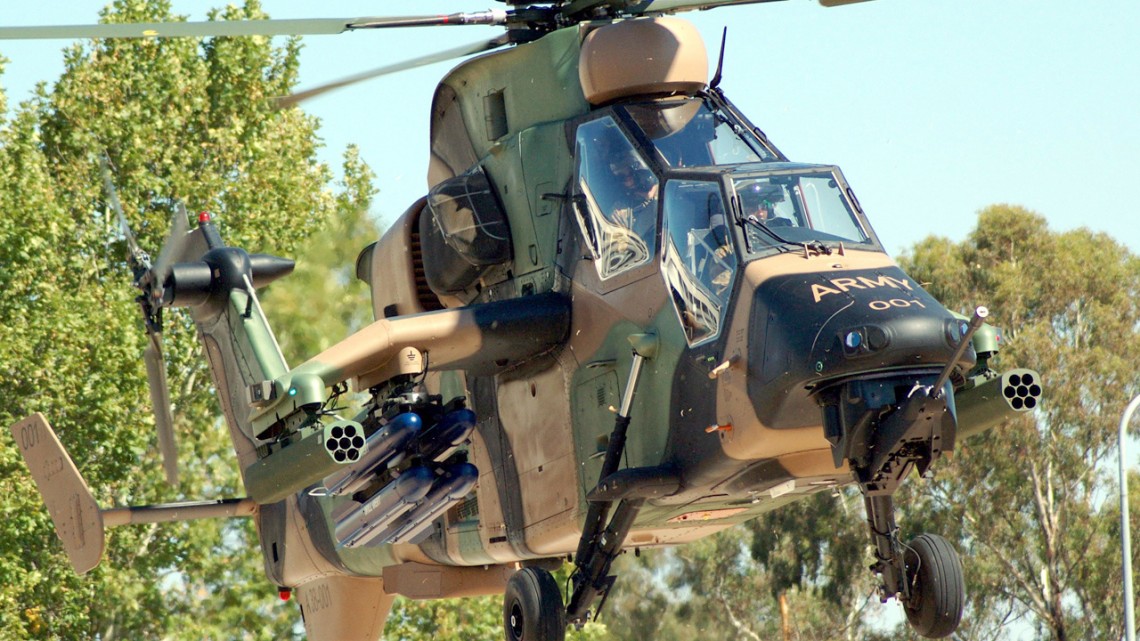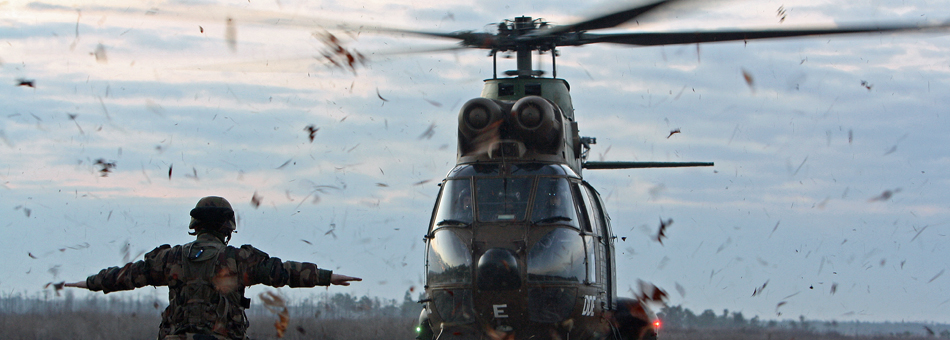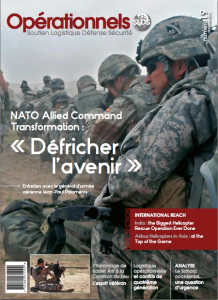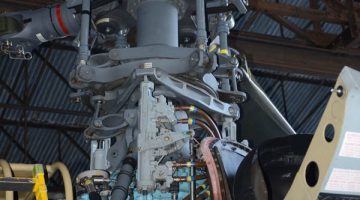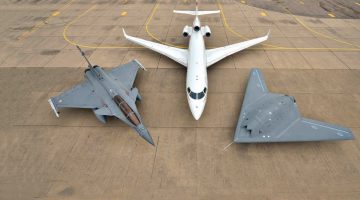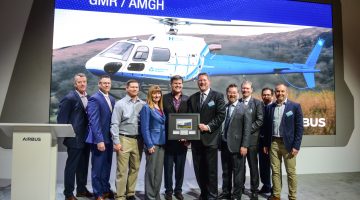Photo credit © Australian Army (ARH Tiger)
This abstract has been lifted and updated from a broader article, first published in August 2013 under the title « Asian Defense and Security : the European Contribution » by our US-based partner website Second Line of Defense. At the time of the interview in July 2013, Norbert Ducrot was then-Eurocopter Senior Vice President, North Asia.
Aneglected aspect of the analysis of the evolution of Asian defense and security is the contribution of European defense industry. Major industrial players are seeking global markets to remain viable and to evolve over time. Defense and security is not a static business ; it is highly competitive and modernization is always a key element of the equation. Global customers are a crucial element for any defense firm to remain on the cutting edge and to be viable in challenging economic conditions. European firms provide core capabilities in many areas of interest to Asian customers, notably in military aerospace, weapons and naval systems. It is certainly the case for Airbus Helicopters (formerly Eurocopter), whose presence in the region is not a new phenomenon, but whose development strategy is.
A Growing Asian Footprint
In a recent interview with AINonline, Norbert Ducrot, CEO of Airbus Helicopters China (who also covers Japan and South Korea) said that « the company plans to increase its presence with more sales, as well as the addition of maintenance, training and assembly facilities. Annual revenues for Airbus Helicopters in North Asia are approximately 500 million Euros, with services accounting for 30 percent of this total ». Norbert Ducrot indeed highlights the importance of support to the acquisition of aircraft in Asian defense as follows « logistical support, training and maintenance constitute a really foundational element in shaping our market strategy. We have several subsidiaries already in Asia, and have more than 2000 people working on support in the region. We have seven flight simulators in Asia as well. We are building out our capacity to support our helicopters in the region and obviously this is a crucial element for success in any defense program. An Asian country is not going to buy a defense product, which they cannot support fully. »
Crédits photos © Murielle Delaporte / Exercice multinational Bold Alligator 2012
With this kind of approach, Airbus Helicopters is likely to see its market share in Asia expand based on an already significant presence in Asia for a long time as well as the buildup of partnerships and presence overtime in the region. What is new is an expanding role in the secu- rity and defense market within Asia itself. Discussing Airbus Helicopters’ evolving role in Asia, Norbert Ducrot under- scores the significant position, which his company has in South East Asia with their light utility helicopters and their Search and Rescue Helicopters. He also highlighted the importance of the wor- king agreements with South Korea in shaping a new helicopter via production cooperation as a key change.
Logistics support, training and maintenance constitute a really foundational element in shaping our market strategy. We have several subsidiaries already in Asia, and have more than 2000 people working on support in the region(…). An Asian country is not going to buy a defense product, which they cannot support fully.
Building Innovative Partnerships : Surion or the largest Puma ever built
In 2006, under the Korean Utility Helicopter (KUH) program, then Eurocopter and South Korea signed an agreement to produce the Surion helicopter, in order to replace the Army and Air Force’s fleet of UH-1H attack helicopters and 500MD light helicopters. Based on the Super Puma family MK1/2 of helicopters, the Surion, as it was renamed in 2009, is able to carry up to 18 passengers.A naval and MEDEVAC variant are planned as well. The helicopter was produced through an agreement between Korean Aerospace Industries (KAI) and then Eurocopter (70-30% for the R&D phase, 60-20% for the production phase with the remaining 20% involving other companies). To be in close reach of its main customers, Airbus Helicopters from the outset created a subsidiary called KHDS based in Sacheon for technical assistance for the KUH program and in Seoul for spare parts and support service activities for its civilian products. Between its first flight in March 2010 and April 2012, 4 prototypes flew 2000 sorties and 2700 flying hours4. The first of the planned 245 Surion helicopters was successfully delivered to the ROKAA (Republic of Korea Army Aviation) in December 2012 and into service 6 months later; more than 20 were delivered by the end of 2013. It is the first indigenously built military transport helicopter in South Korea, with Airbus helicopters as the primary partner, providing the Drive System as well as the Automatic Flight Control System, i.e. the gearboxes, rotor masts, transmission and autopilot subassemblies.
Based on the Super Puma family MK1/2 of helicopters, the Surion, as it was renamed in 2009, is able to carry up to 18 passengers.
According to Norbert Ducrot : « It really is a Korean helicopter. One needs to realize that about 80% of the helicopter has been redesigned by the South Koreans, it is not simply license production for it is a newly designed helicopter. And we have an agree- ment to export this helicopter with them to selected markets. This is not a problem for us for the helicopter has no equivalent in the [Eurocopter/Airbus Helicopters] line. It is a new build 8.5 ton helicopter ». He emphasizes as well the facts that the South Koreans and Japanese are really at the top of the game globally in terms of production technologies and techniques. Because of this it makes a great deal of sense for the company to build out its presence in Asia.
The ARH Tiger, a « Proven Helicopter »
An additional engagement of Airbus Helicopters in Asia, which is yielding a new capability, is the Tiger Armed reconnaissance Helicopter (AHR) in Australia. The Australian Army is in the throes of reform and part of that reform is enhancing its mobility and deployability. The Tiger has been part of that experience since 2001, when 22 ARH plus full training system (including flight and ground simulators), engineering, maintenance, logistics and supply support to the ARH System were ordered for the Australian Army under the Air 87 Program. The last Tiger was delivered at the end of 2011. This program created more than 200 new jobs in Australia.
The French have innovated significantly with their Tigers, notably in operating them off of their amphibious ships off of Libya. This experience has been shared with the Aussies, as the Australian Tiger is based on European variants. Indeed, Norbert Ducrot underscores that « the user groups of different [Eurocopter/Airbus Helicopters] products share their experience. For example, the French and Australians are sharing their Tiger experience to better shape their approaches going forward. » So far, the Australian Army has flown more than 11,500 flying hours.
The Australian Army is in the thrœs of reform and part of that reform is enhancing its mobility and deployability. The Tiger has been part of that experience since 2001
Sharing seems to be the Sesame word for Airbus Helicopters longlasting and snowballing presence both in sales and services in Asia : sharing of technical knowledge in one case, sharing of endusers lessons learned on the other have indeed been one of the successful pathways chosen by the company to build and secure strong and long-term partnerships in the region.
First published on Opérationnels SLDS magazine n°19 – Spring 2014 :









